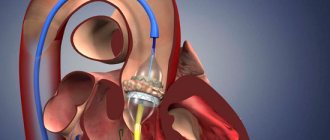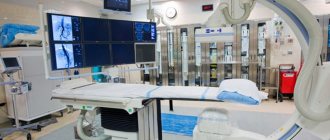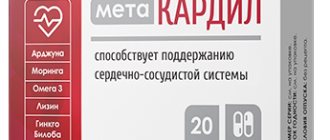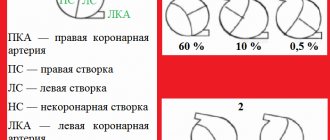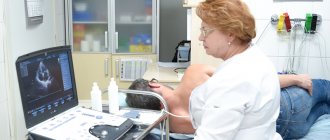According to the WHO definition, cardiomyopathies are cardiac pathologies that result in damage to the heart muscle in the myocardium, the middle part of the muscle fibers of the heart. The disease can appear against the background of heart and other diseases not related to the cardiovascular system.
The code for cardiomyopathy is ICD 10 in accordance with the international classification of diseases. The concept combines all pathologies in which the middle layer of muscle fibers of the heart is affected. The likelihood of occurrence remains very high in the case of arterial hypertension, coronary heart disease (CHD), and emergency conditions leading to damage to the heart valves.
In this case, it is advisable to study symptoms with changes in the myocardium in cardiomyopathy, and not all heart pathologies. These disorders can be caused by both disorders of individual organs and systems, and the body as a whole.
What types of disease?
According to the modern classification, cardiomyopathies can be divided into two main types and several characteristic groups. As previously mentioned, the disease can appear either on its own or as a result of other diseases. In the first case, the causes are often not identifiable and cannot be established using traditional diagnostic methods.
Considering the causes of cardiomyopathies, we can distinguish different types of this disease :
- Primary origin, when the etiology of occurrence is not determined;
- Secondary form with determination of the cause of the development of pathological changes in the myocardium.
Classification is also carried out according to the mechanism of development, pathogenesis:
- Hypertrophic;
- Alcoholic;
- Dilation;
- Dishormonal;
- Restrictive.
Is it possible to avoid the disease?
It is clear that hereditary cardiomyopathy cannot be prevented. But it is possible to prevent the progression of this disease from worsening by reducing the risk of coronary artery disease, arterial hypertension or myocardial infarction. Doctors often advise patients with this diagnosis to adhere to a healthy lifestyle, exercise, and not use drugs, alcohol, or smoke. Sometimes adequate and timely treatment of specific diseases that can cause toxic cardiomyopathy is prevention. To do this, it is recommended to regularly undergo a complete examination of the body, listen to the advice of doctors and take medications with caution.
If the disease still prevails, despite the unfavorable prognosis, the implantation of a device that stops arrhythmias will avoid sudden death.
What factors cause the primary form?
Primary cardiomyopathy can occur due to a viral infection, an autoimmune disorder, or idiopathic myocardial fibrosis. The cause may also be certain types of changes in the human genome. The influence of a genetic factor on the appearance of cardiac cardiomyopathy cannot be determined due to the fact that a huge number of proteins are involved in the metabolism of cardiomyocytes. In this case, pathology develops when changes appear in just one or several of them.
Symptoms characteristic of cardiomyopathy are caused by viral causes of the development of myopathies. This theory can be confirmed by antibodies that are detected in relation to the penetration of viruses . For example, the immune system reacts to cytomegalovirus, the causative agent of hepatitis C, as well as the Coxsackie virus. All these pathogens are capable of influencing DNA, with the subsequent development of pathology of the heart muscle.
The theory of the development of cardiomyopathy according to clinical recommendations as a result of the appearance of autoimmune changes in the body is not without foundation. The development mechanism is associated with the acceptance of myocardial cells as foreign by the human immune system. In this case, the body produces antibodies directed against cardiomyocytes. This opposite effect of immunity can be caused by viruses, bacteria, and various pathologies.
The restrictive form is characterized by myocardial rigidity with limited filling of the heart chambers with blood. A decrease in blood flow volumes leads to the development of diastolic dysfunction, against which heart failure appears with the manifestation of acute restrictive cardiomyopathy.
The cause may be idiopathic myocardial fibrosis, cardiosclerosis , in which cardiomyopathy appears, the diagnosis shows the replacement of the characteristic muscle fibers of the heart with connective tissue. They lose elasticity, are unable to contract, and disrupt the heart rhythm. The cause may be inflammatory processes in the myocardium or a previous heart attack. secondary cardiomyopathy occurs .
Complications
- The main ones are heart failure and arrhythmias in their obvious clinical manifestations.
- When the walls of the ventricle expand, the heart valves stop working normally.
- Due to the large accumulation of fluid in the tissues and internal organs (lungs), edema appears.
- Embolism (formation of blood clots and blood clots) is an extremely dangerous complication that leads to heart attack and stroke.
- Sudden cardiac arrest is the most complex consequence of cardiomyopathy, which, in the absence of timely resuscitation, is fatal.
In order for the forecast to be as optimistic as possible, monitor your lifestyle and diet. And to avoid negative consequences, visit a qualified cardiologist as often as possible and undergo diagnostics using modern equipment.
What pathologies can provoke the secondary form?
Secondary cardiomyopathy appears against the background of pathologies associated with the functioning of the human cardiovascular system.
The list of these diseases includes:
- IHD, coronary heart disease;
- Infections leading to destructive changes in the heart muscle;
- Endocrine diseases;
- Arterial hypertension;
- Shifts in metabolism and accumulation of substances;
- Electrolyte balance;
- In connective fibers;
- Amyloidosis;
- Neuromuscular pathology;
- Severe poisoning;
- During pregnancy.
Coronary heart disease is distinguished by a number of characteristic symptoms. Against the background of atherosclerosis, the lumen of the coronary arteries narrows, and a lack of oxygen (O2) occurs in the myocardium. This leads to the destruction of cardiomyocytes and replacement with connective fibers.
Myocardial infections also cause disorders in the heart muscle, inflammatory processes, edema, and damage to cardiomyocytes. Acute myocarditis develops, with the replacement of cardiac fibers by connective tissue, resulting in cardiomyopathy.
Endocrine diseases and hormonal disorders disrupt the functioning of the heart as a result of the influence of hormones and hyperstimulation of functions. These complications can cause:
- Thyroid dysfunction;
- Adrenal diseases;
- Diabetes.
Arterial hypertension with a sustained increase in blood pressure is also included in the list, leading to a pathogenic effect on the myocardium. Under these conditions, the load on the heart significantly increases, as a result, the structure of the cardiac fibers is disrupted, with loss of elasticity and the development of cardiomyopathy.
Shifts in metabolism lead to the accumulation of substances that are foreign to the myocardium and cause irreversible effects on the functioning of the heart muscle. Among the main reasons:
- Pathologies of glycogen accumulation;
- Phytanic acid in Refsum syndrome, genetic origin;
- Sphingolipids in Farbi's disease, with a genetic nature;
- Hemochromatosis with accumulation of iron in the fibers.
Problems with maintaining electrolyte balance are accompanied by changes in the amount of ions in the blood, which affects the functioning of the heart and the structure of myocardial fibers. Potassium, phosphorus, chlorine, magnesium, and calcium ions are washed out during severe diarrhea and various kidney diseases.
Pathological processes of connective tissue in the heart area cause systemic damage and disrupt the structure of myocardial fibers. Inflammation of these fibers leads to cardiosclerosis and gradual replacement of the heart muscle with connective tissue with the development of cardiomyopathy.
The list of diseases that provoke the pathological process includes:
- Scleroderma;
- Dermatomyositis;
- Lupus erythematosus;
- Rheumatoid arthritis.
Amyloidosis is characterized by the deposition of amyloid and causes disruption of the heart muscle. Moreover, the accumulation of this complex of proteins and polysaccharides occurs directly in the myocardium, which leads to the development of pathology.
Neuromuscular pathology causes disturbances in the transmission of impulses by nerve fibers with subsequent deviations in the functioning of the myocardium. In this case, asystole or extrasystole is observed, with a pronounced failure in the contraction of the heart muscle. In particularly severe conditions, the muscle tone of the heart decreases sharply. This leads to the development of a severe form of cardiomyopathy.
Poisoning with poisons, alcohol, surrogates, toxins directly affects the functioning of the heart and causes emergency conditions incompatible with human life. Toxic compounds directly affect the damage of cardiomyocytes, while the passage of the nerve impulse is blocked, and acute heart failure develops.
Severe poisoning with the development of cardiomyopathy is caused by various substances :
- Alcohol products and surrogates;
- Medicines, drugs (amphetamines group and others);
- Toxic compounds, heavy metals, including arsenic, lead, mercury and others.
Chronic consumption of these products causes irreversible changes in the heart muscle, pain in the heart area, and myocardial infarction. The high risk of developing emergency conditions leads to the fact that a person is constantly on the verge of life and death.
Radiation activity directly affects the human body and also refers to damaging factors that cause disturbances in the functioning of the heart. In some cases, such as in pregnant women, problems with the myocardium are temporary. But with chronic alcoholism, drug addiction, and the use of chemical substances, the disease continues to progress and the patient cannot be cured.
Reversible conditions include cardiomyopathy in pregnant women . It occurs more often in the last trimester or after childbirth due to stress. During this period, hemodynamics change dramatically, the circulatory system adapts to provide adequate nutrition to the fetus. At the same time, the volume of circulating blood changes, the level of blood pressure increases or decreases. These changes lead to the development of a reversible form of the disease.
Treatment of cardiomyopathy is prescribed by a doctor in accordance with the indications and depends on the cause of the disease. If the source of severe pathology cannot be determined, the disease is classified as a primary form and a course of maintenance therapy is prescribed.
Rate this article
Article rating 4.45 out of 5. Votes: 11.
Latest articles
Sexual transmission of infections
Sexually transmitted infections or STIs are dangerous diseases that can undermine health and lead to dire consequences. Most of the diseases in this group are…
Hormonal disorders
A woman’s well-being largely depends on the endocrine system. Any hormonal imbalance can cause a sharp deterioration in health, weakening the immune system...
Cervical dysplasia
Cervical intraepithelial neoplasia or cervical dysplasia is a precancerous condition expressed by pathological changes in cells. In most...
Cardiomyopathy: treatment and drugs
At the first stage, a comprehensive diagnosis is carried out, the patient undergoes echocardiography and Holter ECG monitoring. After determining the type of disease and root causes, the cardiologist selects appropriate therapy and prescribes a course of treatment. Tactics will depend on many factors, including the anatomical features of the heart muscle.
How is cardiomyopathy treated:
- limiting and developing a personal plan for physical activity;
- following the regimen and lifestyle prescribed by the doctor;
- drug therapy and taking medications prescribed by a cardiologist;
- if necessary, surgical methods of intervention.
For the treatment of cardiomyopathy in our country, ACE inhibitors, diuretics, beta blockers, digoxin, anticoagulants and antiarrhythmic drugs are traditionally used.
